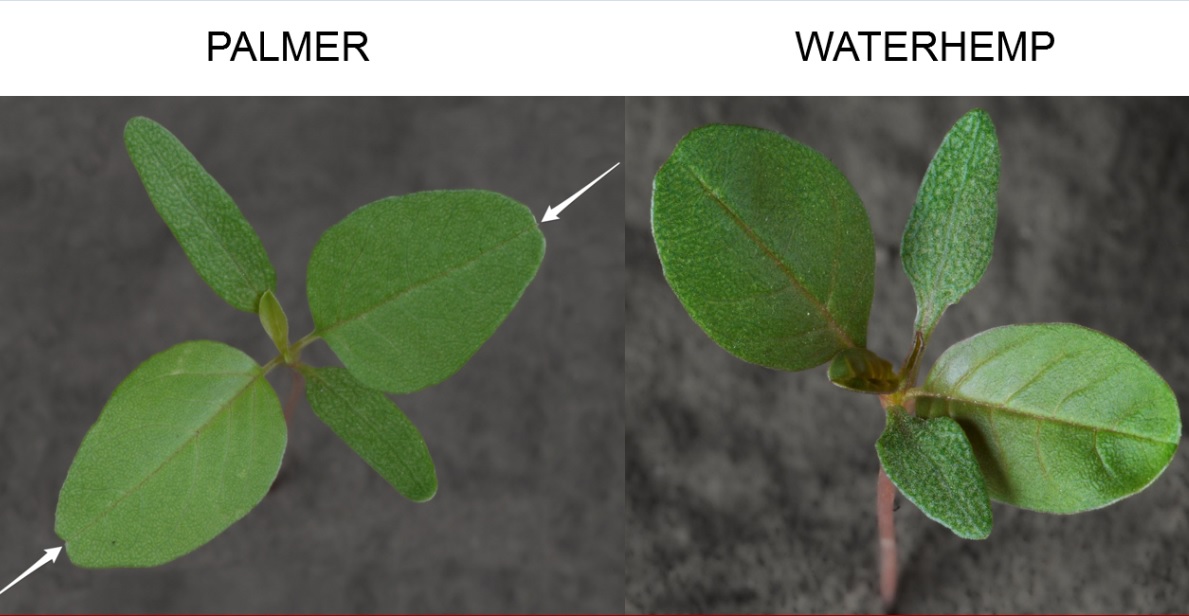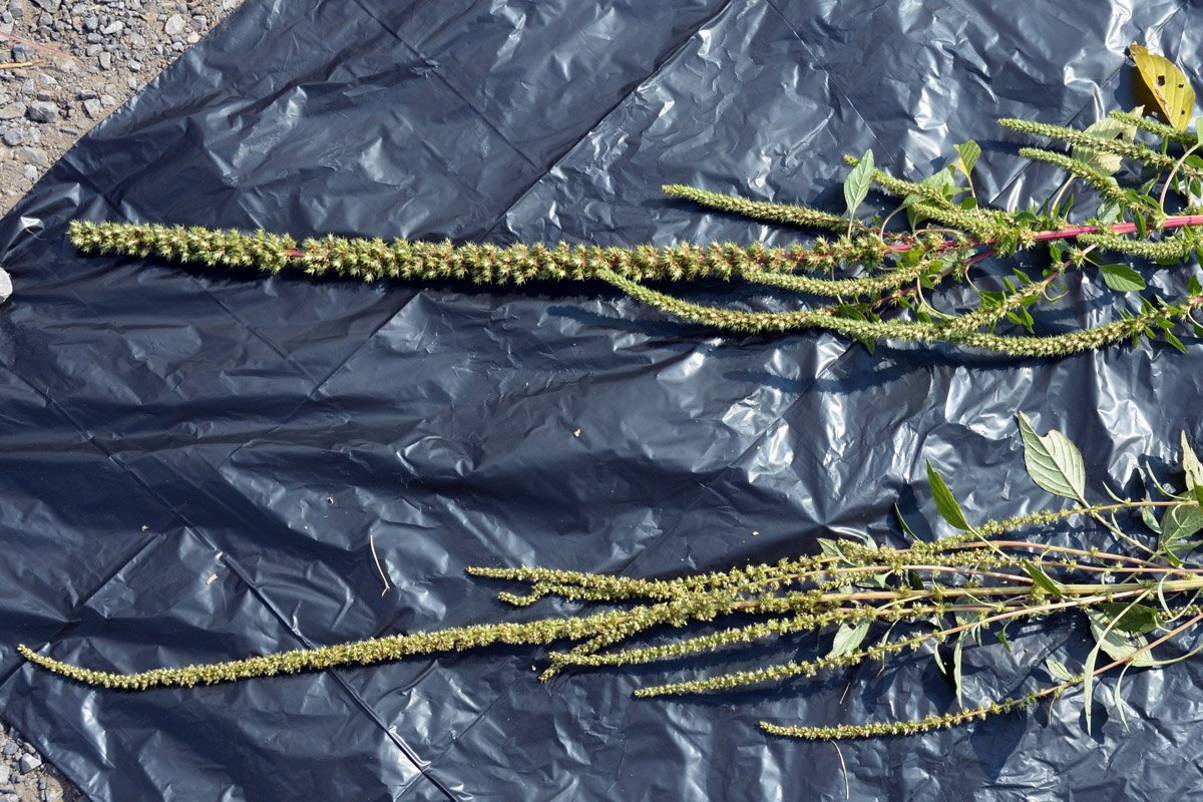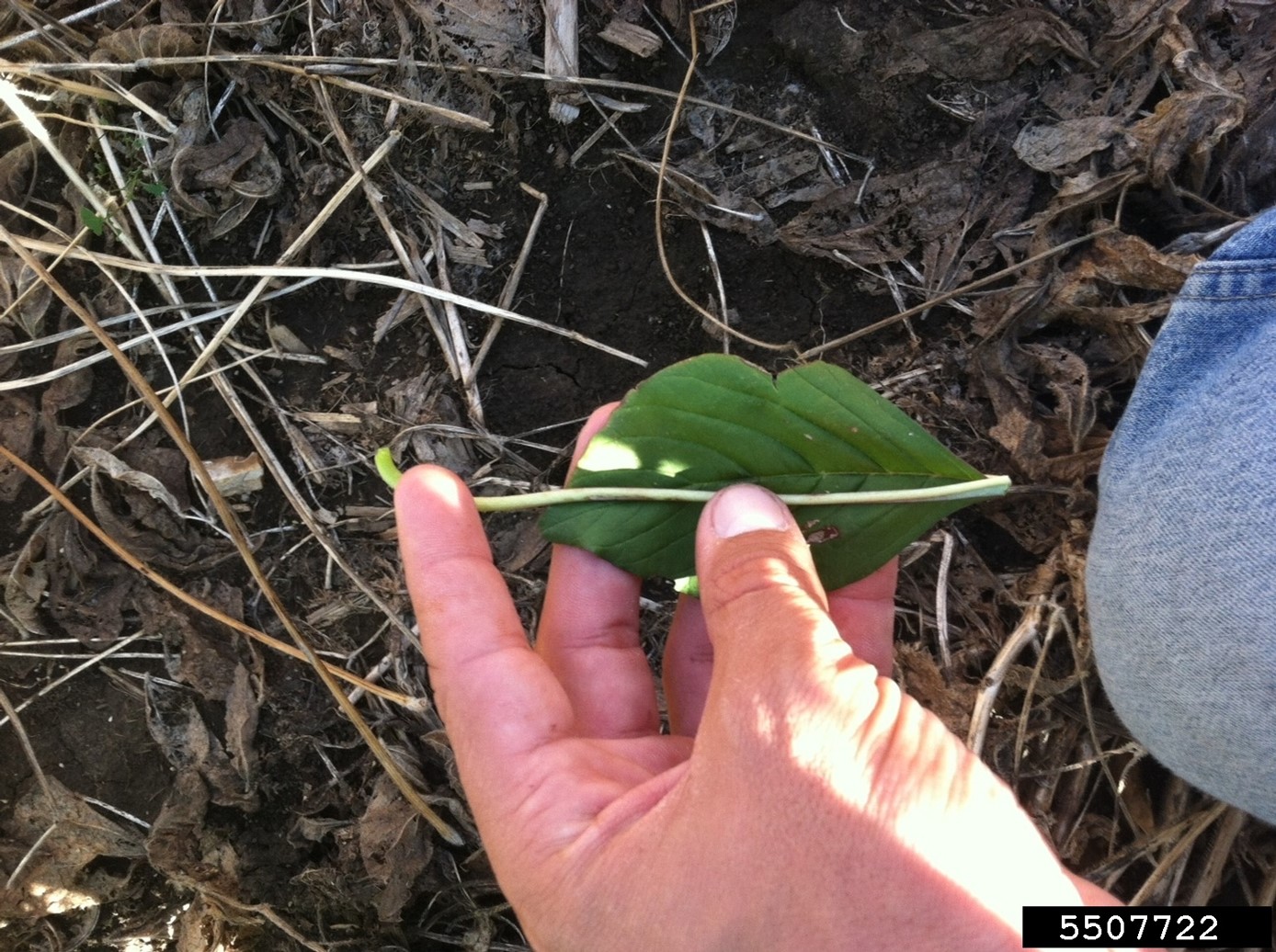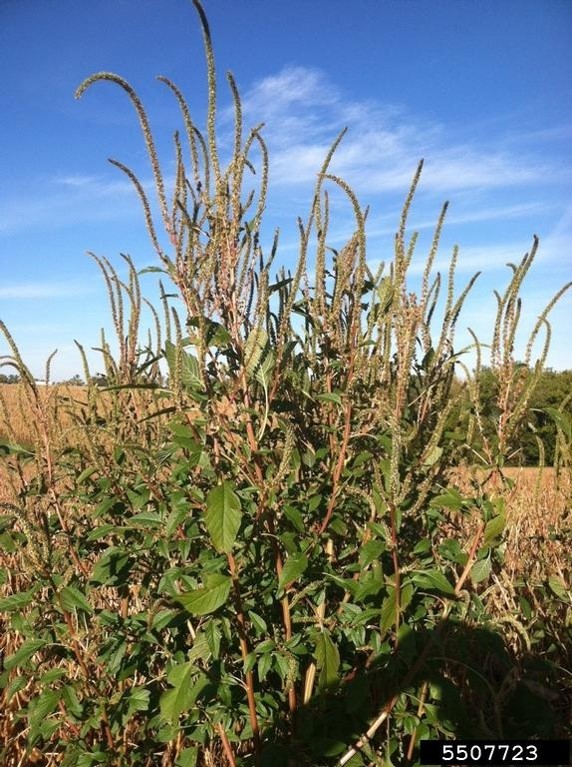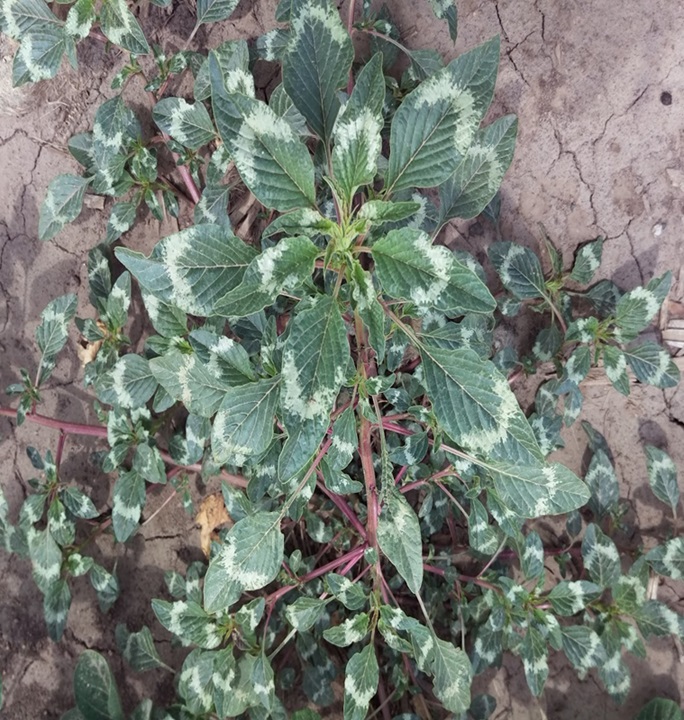Palmer Amaranth
Amaranthus palmeri
Description
Palmer amaranth is an edible flowering plant member of the pigweed family and is an erect summer annual dioecious species. It grows 2-3 inches per day and can grow to 8 feet tall. To identify palmer amaranth
from waterhemp which it closely resembles: palmer usually has denser canopy, it has leaveswith petioles longer than the leaf blade, female palmer flowers have large, sharp bracts thatare painful to the touch when mature. Some palmer plants have a silverish watermark on the leaves.
Habitat
Disturbed areas and crop fields.
Location in Nebraska
Primarily in the southern half of the state but can be found throughout Nebraska.
Pathway of Introduction and Spread
It is native to the southwestern U.S. and has been introduced via seed mixes, equipment and vehicles containing palmer amaranth seeds.
Impacts
Palmer amaranth can be toxic to livestock. It can reduce corn yields by 91% and soybean yields by 79%. Palmer amaranth has shown herbicide resistance to several herbicides including glyphosate which is the most commonly used herbicide in glyphosate-resistant corn and soybean fields. A single female plant can produce 1 million seeds per year and seeds can remain viable for 5 years. It is important to clean equipment before working in a crop field or disturbed area to prevent the spread of palmer amaranth.
Sources of information for the content on this page include: https://cropwatch.unl.edu/2017/glyphosate-resistant-palmer-amaranthconfirmed-south-central-nebraska, https://www.ag.ndsu.edu/palmeramaranth & https://crops.extension.iastate.edu/files/page/files/crop3105.pdf.
Photo Credits:
Alfred Stark & Lowell Sandell
Ross Recker, Univ. of Wisconsin-Madison
Jennifer Rees, University of Nebraska
